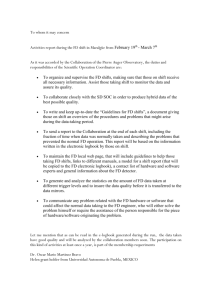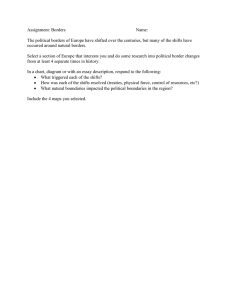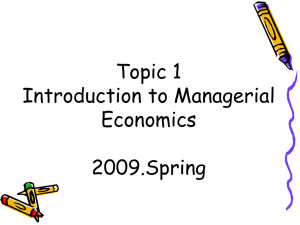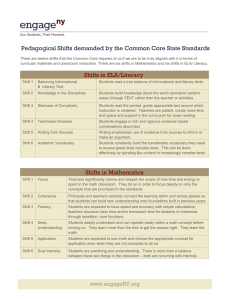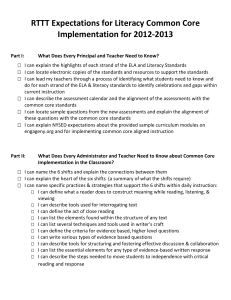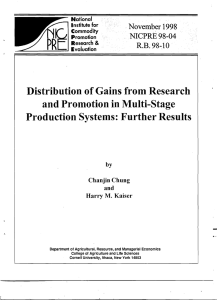Evaluation of Producer Gains from Commodity Checkoff Programs: Research vs. Promotion
advertisement
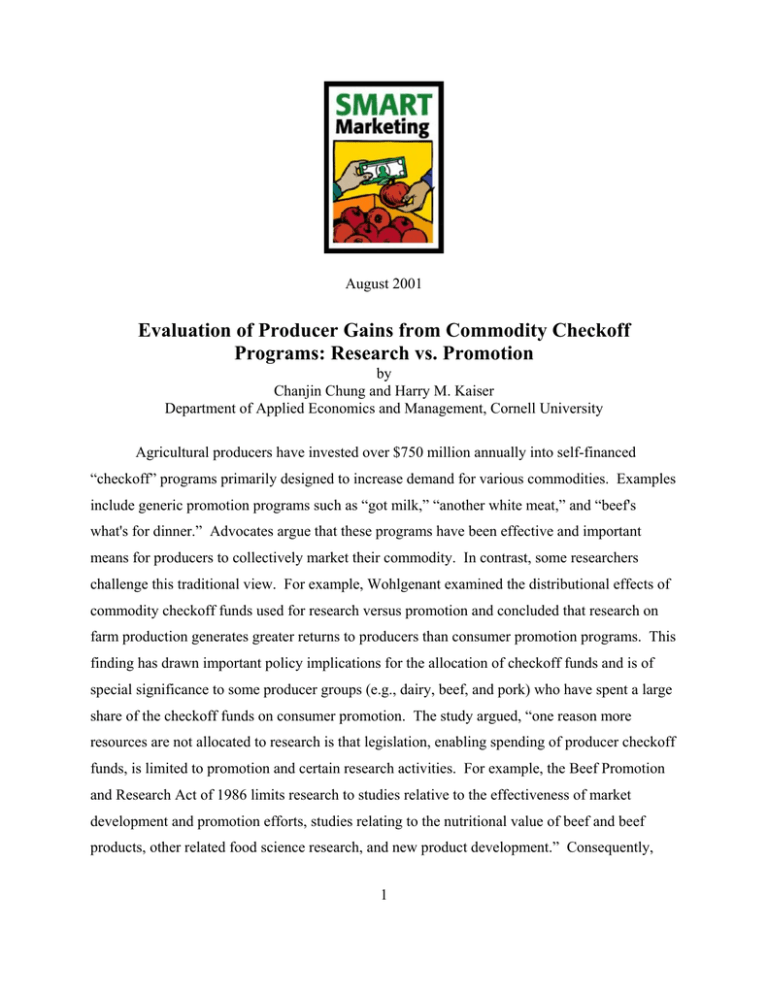
August 2001 Evaluation of Producer Gains from Commodity Checkoff Programs: Research vs. Promotion by Chanjin Chung and Harry M. Kaiser Department of Applied Economics and Management, Cornell University Agricultural producers have invested over $750 million annually into self-financed “checkoff” programs primarily designed to increase demand for various commodities. Examples include generic promotion programs such as “got milk,” “another white meat,” and “beef's what's for dinner.” Advocates argue that these programs have been effective and important means for producers to collectively market their commodity. In contrast, some researchers challenge this traditional view. For example, Wohlgenant examined the distributional effects of commodity checkoff funds used for research versus promotion and concluded that research on farm production generates greater returns to producers than consumer promotion programs. This finding has drawn important policy implications for the allocation of checkoff funds and is of special significance to some producer groups (e.g., dairy, beef, and pork) who have spent a large share of the checkoff funds on consumer promotion. The study argued, “one reason more resources are not allocated to research is that legislation, enabling spending of producer checkoff funds, is limited to promotion and certain research activities. For example, the Beef Promotion and Research Act of 1986 limits research to studies relative to the effectiveness of market development and promotion efforts, studies relating to the nutritional value of beef and beef products, other related food science research, and new product development.” Consequently, 1 this study suggested Congress should consider expanding the scope of activities to directly include funding of farm-level research activities. The conclusion of Wohlgenant’s study is based on three assumptions: (1) farm and nonfarm inputs have a nonzero elasticity of substitution, (2) each checkoff activity is equally efficient (i.e., retail demand and farm supply curves are shifted by the same amount vertically), and (3) shifts in demand and supply are parallel. While a parallel shift in demand implies that consumer promotion results in a constant increase in sales at every level of price, a pivotal shift in demand implies that promotion effects are greater at low prices than at high prices. Similarly, a pivotal shift in supply implies that research generates greater cost reduction for high-cost farms than for low-cost farms. Several studies in the literature of marketing and agricultural economics have already indicated possibilities of pivotal shifts in demand (e.g., Kuehn; and Prasad and Ring) and supply (e.g., Lindner and Jarrett; Voon and Edwards; and Alston, Sexton, and Zhang) caused by consumer promotion and research activities, respectively. Therefore, it is important to reinvestigate previous findings under the assumption of pivotal shift before making general policy prescriptions. We re-examined earlier findings with the assumption of pivotal rather than parallel shifts in demand and supply, and found that consumer promotion benefits producers more than research activities. Our results indicate that the ranking of producer gains from research and promotion activities depends on the type of shifts in demand and supply curves. The results, therefore, suggest that erroneous a priori generalization about the nature of the demand and supply shifts might lead to incorrect policy recommendations for the allocation of checkoff funds. Although Lindner and Jarrett discussed several cases where researchers could envision the nature of the supply shifts, we know of no study that actually estimates the types of shift directly from technology transfers and promotion activities. Rose argued that, “.. it is unlikely that any knowledge of the shape of the supply curve, or the position at which the single estimate applies, will be available. The only realistic strategy is to assume that the supply shift is parallel.” However, since the assumption on the type of shift turns out to be a key determinant of the optimal allocation of checkoff funds, it may not be appropriate to simply assume parallel shifts without having any knowledge regarding the shifts. The policy conclusions from research 2 results relating to the distribution of gains from checkoff programs, therefore, should be made with caution until researchers are able to identify the nature of the shifts. Further research on identifying the nature of demand and supply shifts will significantly contribute to our understanding of the relative producer gains from research and promotions. References Alston, J. M., R. J. Sexton, and M. Zhang. “The Impacts of Imperfect Competition on the Size and Distribution of Research Benefits.” Amer. J. Agr. Econ. 79(November 1997):1252-65. Kuehn, A. A. “How Advertising Performance Depends on Other Marketing Factors.” Journal of Advertising Research 2(March 1962):2-10. Lindner, R. J., and F. G. Jarrett. “Supply Shifts and the Size of Research Benefits.” Amer. J. Agr. Econ. 60(February 1978):48-58. Prasad V. K. and L. W. Ring. “Measuring Sales Effects of Some Marketing Mix Variables and Their Interactions.” Journal of Marketing Research 13 (November 1976):391-96. Rose, R. N. “Supply Shifts and the Size of Research Benefits: Comment.” Amer. J. Agr. Econ. 62(November 1980):834-44. Voon, J. P., and G. W. Edwards. “The Calculation of Research Benefits with Linear and Nonlinear Specifications of Demand and Supply Functions.” Amer. J. Agr. Econ. 73(May 1991):415-419. Wohlgenant, M. K. “Distribution of Gains from Research and Promotion in Multi-Stage Production Systems: The Case of the U.S. Beef and Pork Industries.” Amer. J. Agr. Econ. 75(August 1993):642-51. "Smart Marketing" is a monthly marketing newsletter for extension publication in local newsletters and to place in local media. It reviews the elements critical to successful marketing in the food and agricultural industry. Articles are written by faculty members in the Department of Applied Economics and Management at Cornell University "Share the gift of communication." Please cite or acknowledge when using this material. 3

